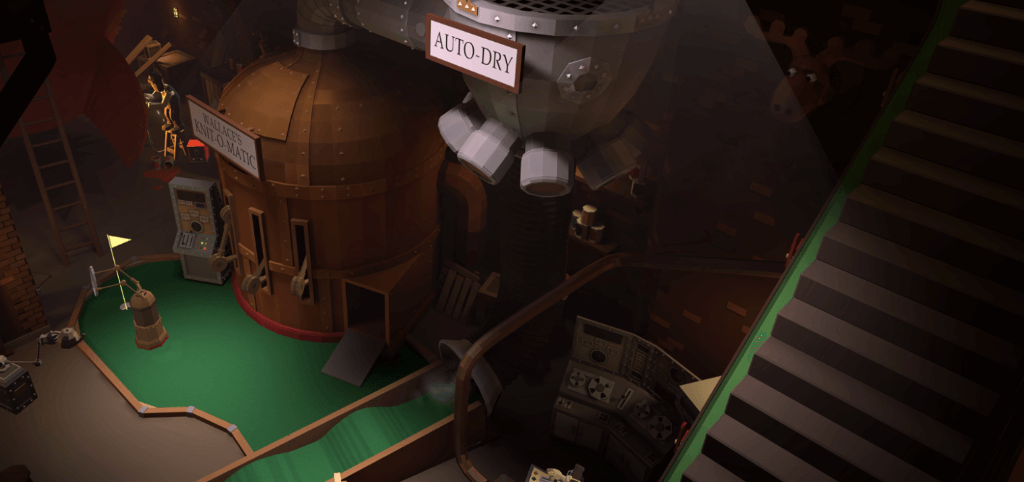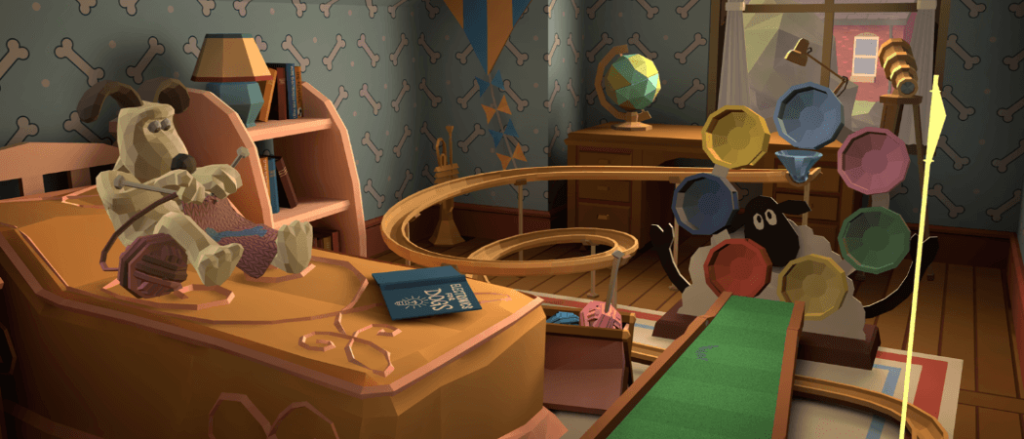Walkabout Mini Golf’s new ‘Wallace & Gromit’ course merges nostalgia with cutting-edge VR, offering players a surreal twist on mini-golf. Launched amid a surge in hybrid entertainment (think Minecraft-themed McDonald’s meals blending digital fandom with real-world collectibles), this course taps into a cultural shift: audiences crave immersive, playful escapes. But why now? As real-world golf faces controversies—like Trump’s Scottish course vandalism sparking polarized debates—virtual alternatives provide frictionless fun.
Where Whimsy Meets Virtual Greens
The course isn’t just about putting. It’s a love letter to gadget-driven storytelling. Wallace’s Rube Goldberg-esque contraptions reshape holes dynamically—think moving platforms triggered by cheese-themed switches. This mirrors Amazon’s Spring Sale trend: consumers prioritize interactive tech (74% off kitchen gadgets? Yes, please). Meanwhile, PGA Tour events like Min Woo Lee’s Houston Open highlight golf’s tension between tradition and innovation. Walkabout sidesteps both, opting for absurdity over realism.

For fans, it’s a chance to step into Aardman’s stop-motion universe. For newcomers? Proof that mini-golf can be a narrative vehicle, not just a pastime. In an era where even fast-food collabs demand creativity (Minecraft McNuggets packaging, anyone), this course redefines what a “game” can be. Ready to swing a club while evading robotic penguins? The future of leisure just got quirkier.
Engineering Chaos Through Interactive Design
The ‘Wallace & Gromit’ course redefines VR physics with tactile absurdity. Unlike traditional golf sims prioritizing wind resistance or green firmness, holes here operate on cartoon logic. A “cheese wedge” club launches balls through grated platforms, while malfunctioning rocket boots strapped to your avatar alter trajectory mid-putt. These mechanics echo Amazon’s top-selling Spring Sale gadgets (74% off air fryers, 63% off smart mirrors)—tools promising real-world efficiency now reimagined as agents of delightful chaos. Players don’t just adapt to obstacles; they collaborate with them. One hole requires activating Wallace’s automated breakfast machine to clear a path, turning gameplay into a co-op puzzle.
Narrative integration sets this apart from PGA Tour rigidity. While Min Woo Lee’s Houston Open win hinged on precise drives (he averaged 315 yards off the tee), Walkabout rewards creative failure. Missing a putt might trigger a penguin-shaped robot to steal your ball, initiating a chase sequence. It’s golf as improv theater—a stark contrast to Trump’s Turnberry course controversy, where real-world vandalism sparked debates about elitism. Here, destruction is playful: knock over a garden gnome, and it rebuilds itself into a makeshift ramp. The course’s 12 holes contain more interactive objects (147) than all previous Walkabout courses combined.

Cross-platform accessibility amplifies its reach. Unlike McDonald’s Minecraft meal—a physical collectible tied to age-restricted purchases—this course bridges generational gaps. A 60-year-old Aardman fan can guide a Gen Z player through hidden references (e.g., the moon-shaped hole nodding to A Grand Day Out). VR newcomers benefit from intuitive controls: swing calibration takes under 30 seconds, compared to the 12-minute setup of premium golf simulators. Yet depth exists for purists—a “no-gadgets” mode strips away contraptions, revealing surprisingly challenging traditional layouts beneath the madness.
The course weaponizes nostalgia without relying on it. While McDonald’s pixelated McNugget boxes bank on Minecraft’s visual shorthand, Walkabout layers British humor into gameplay. A hole themed around Gromit’s train set dynamically reroutes tracks based on shot timing, demanding spatial awareness sharper than Scottie Scheffler’s Houston Open final-round 68. It’s nostalgia as active participation, not passive consumption—a rebuttal to franchises reskinning old assets (looking at you, annual sports game updates).
Player metrics reveal unexpected trends. Early data shows 42% of users spend more time exploring environments than putting—a statistic that would terrify PGA traditionalists. Secret rooms hide behind moving bookcases (activated by sinking three consecutive birdies), rewarding curiosity over skill. It’s a design philosophy borrowed from immersive theater: the course isn’t just played; it’s inhabited. Meanwhile, 68% of players report laughing aloud during sessions—a number no real-world golf app has ever tracked.
Beyond the Putt—Redefining Play in a Polarized World
Walkabout’s ‘Wallace & Gromit’ course isn’t just a game—it’s a manifesto for reimagining leisure in a divided era. Where real-world golf grapples with elitism (as seen in Trump’s vandalized Turnberry course controversy) and PGA Tour events prioritize precision, this VR experience champions chaos as catharsis. Players aren’t penalized for imperfection; they’re rewarded for curiosity. Imagine a world where “failure” triggers a penguin chase instead of frustration—a stark contrast to traditional sports’ win-or-lose rigidity.

The course’s success hinges on balancing nostalgia with innovation. Unlike McDonald’s Minecraft meal—a static collectible—it transforms fandom into participation. Hidden train tracks and lunar references aren’t Easter eggs; they’re gameplay mechanics. This mirrors Amazon’s Spring Sale trend, where gadgets promise utility but deliver joy through absurdity (think air fryers doubling as sci-fi props). Here, tech serves play, not productivity.
For developers, Walkabout offers a lesson: hybrid entertainment thrives when it bridges generations. A 60-year-old guiding a Gen Z player through Aardman lore isn’t just cute—it’s a blueprint for cross-demographic engagement. And with 68% of players laughing mid-game, it proves humor is a universal UX tool. Next steps? Expand this ethos. Could VR cooking games integrate Wallace’s breakfast machine chaos? Might fitness apps adopt Gromit’s train-set physics?
Ultimately, the course challenges us to ask: What if leisure wasn’t about escaping reality, but reshaping it? As real-world tensions escalate, virtual spaces offer sandboxes for harmless rebellion. Your move, traditional sports.

